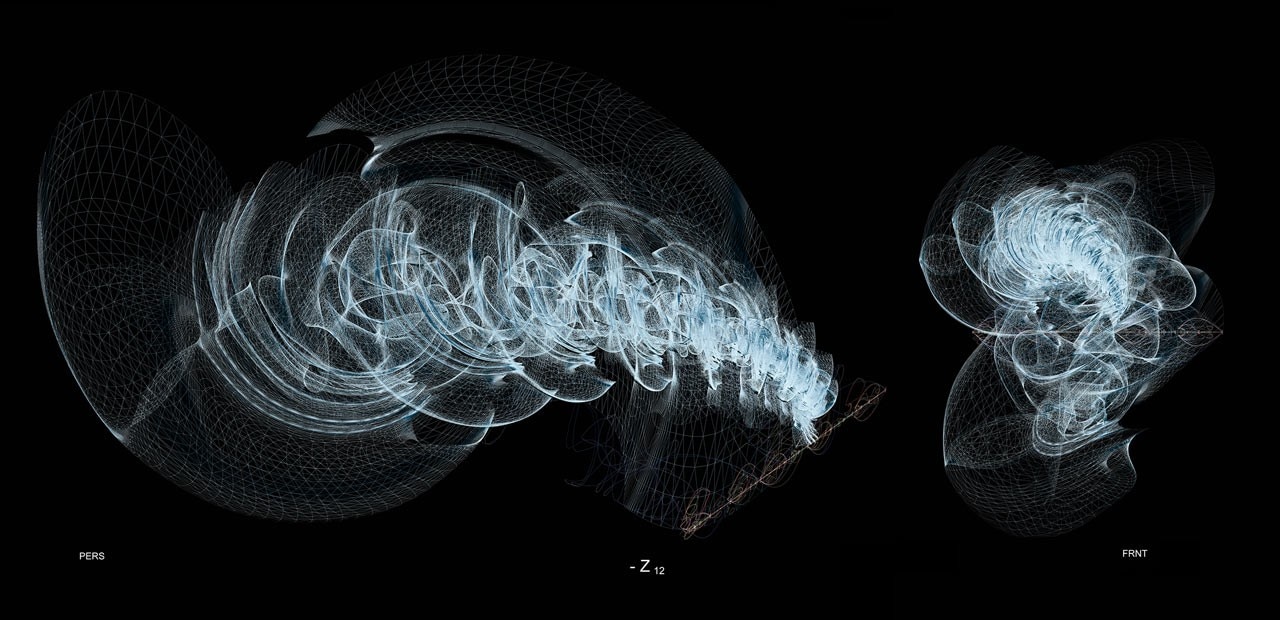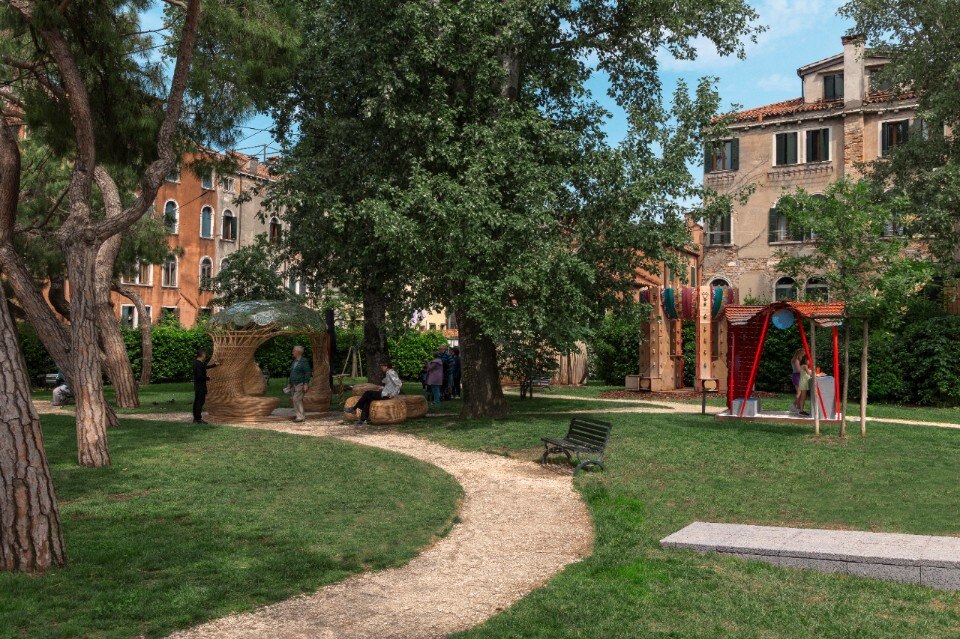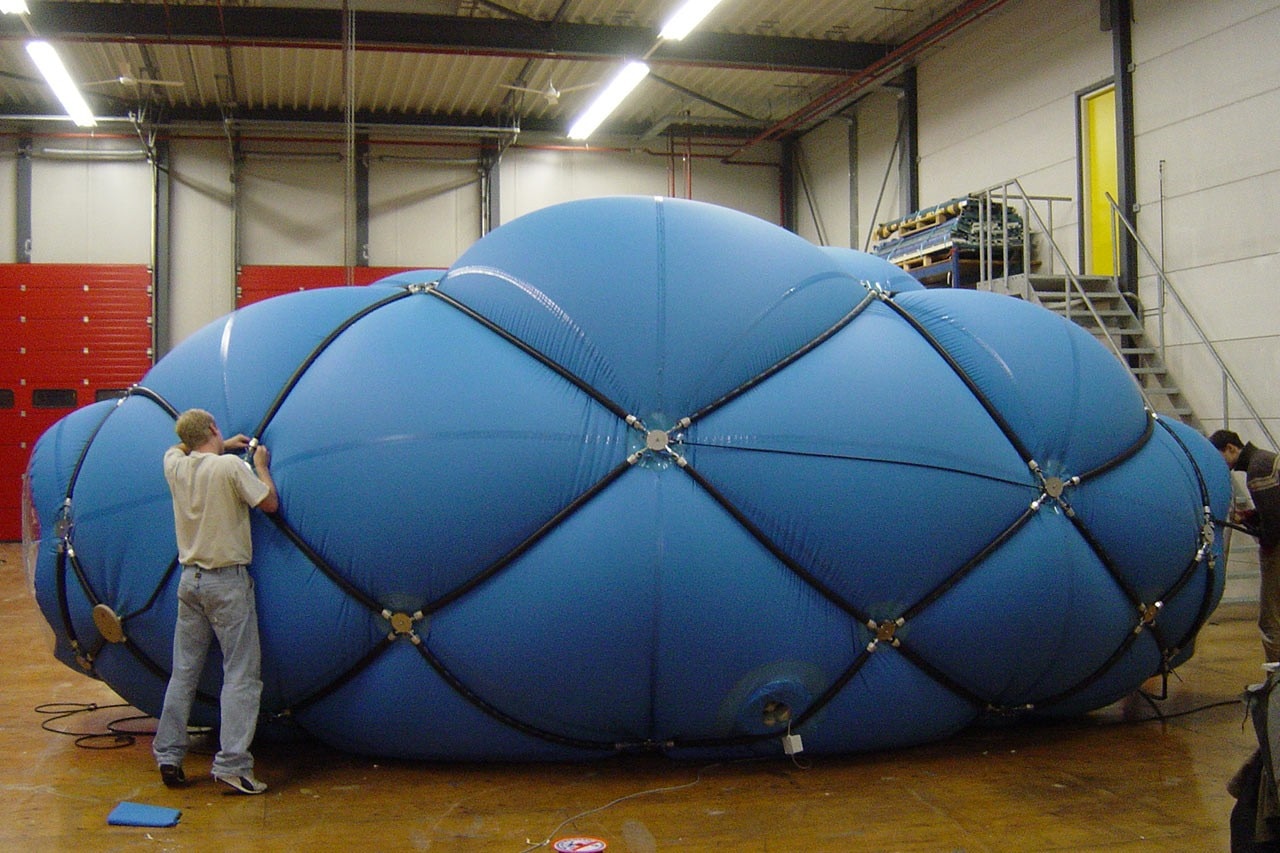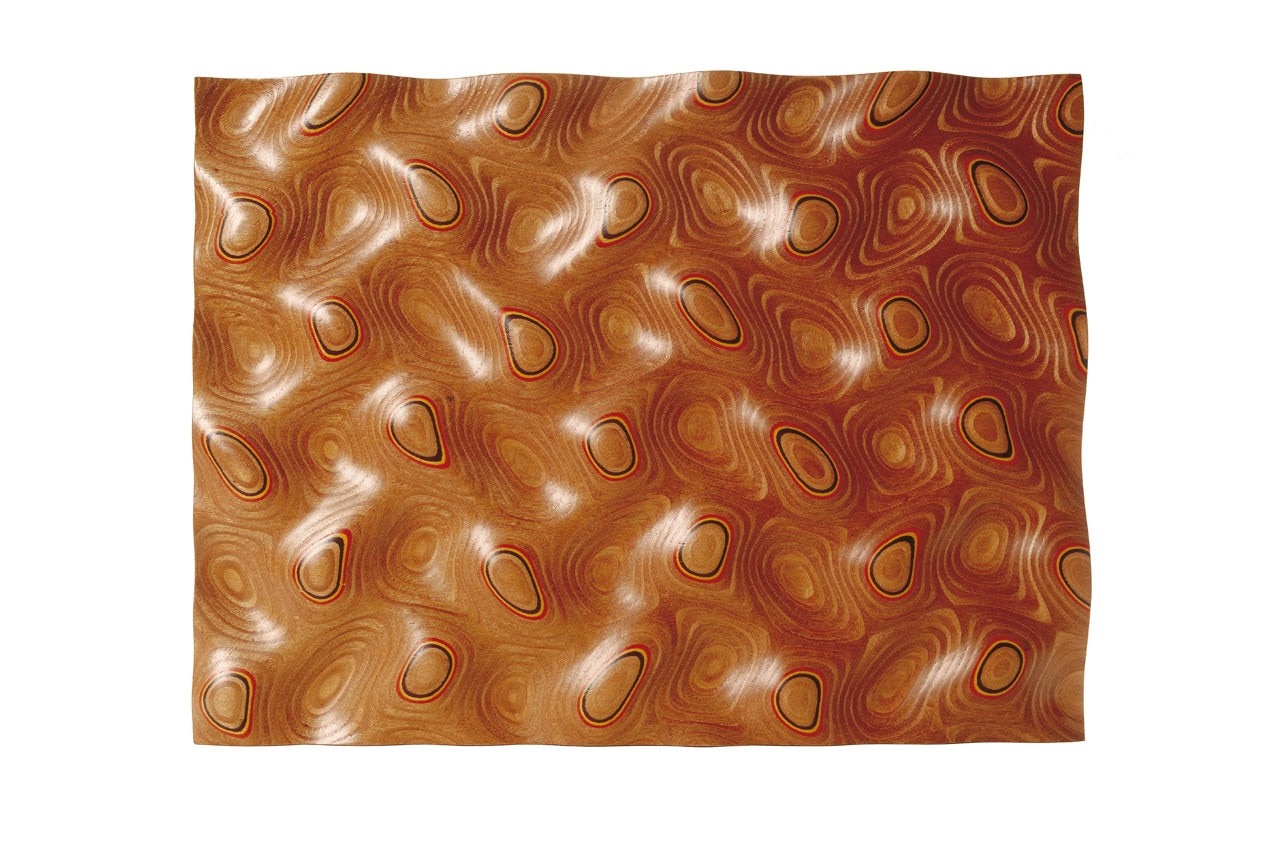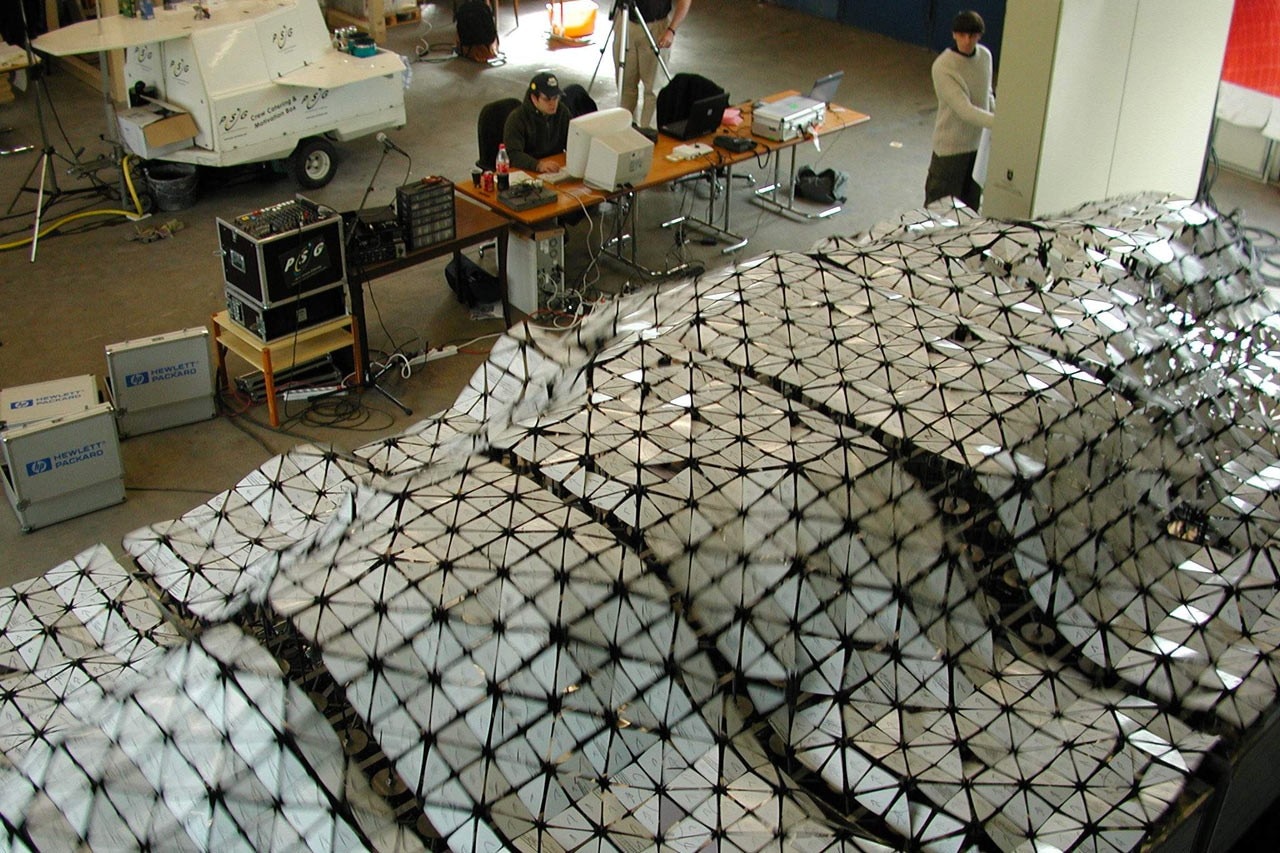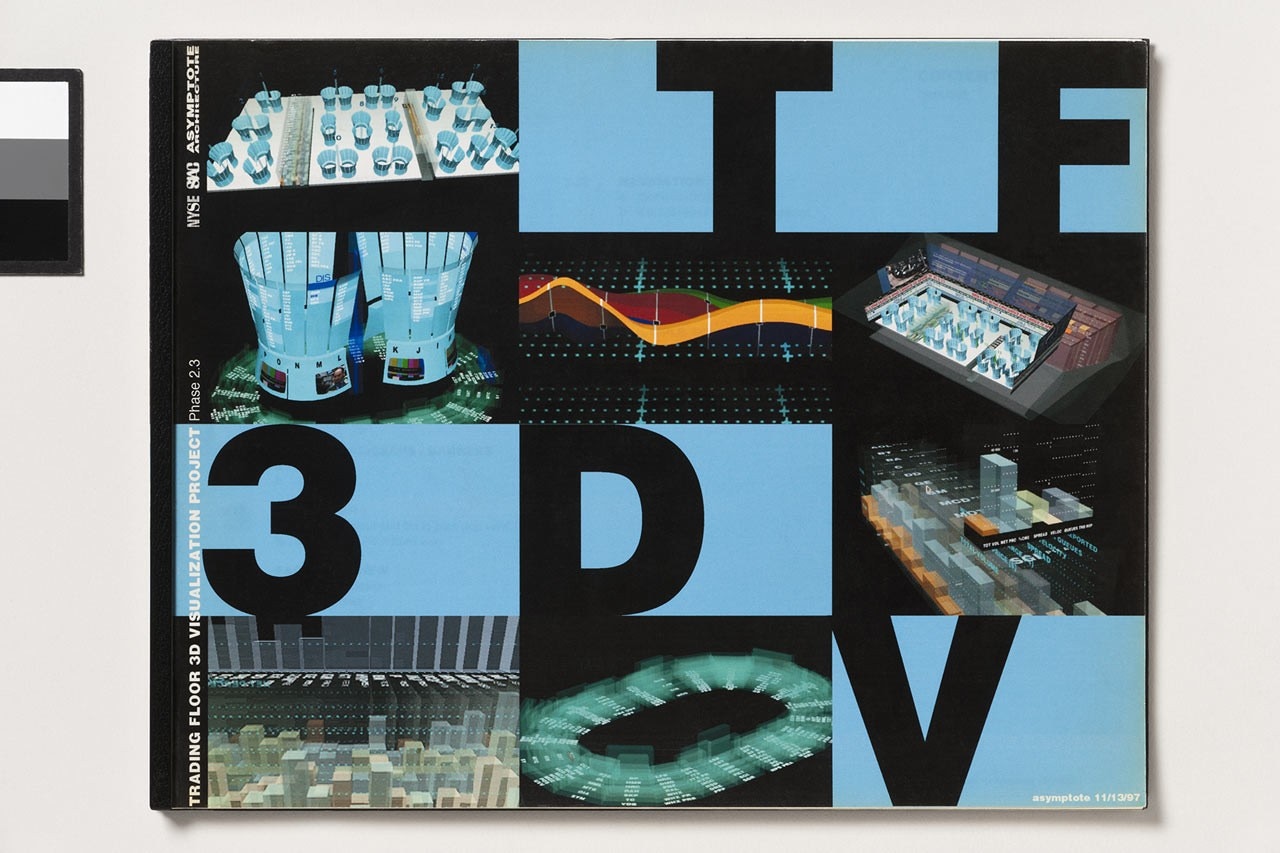
“Media and Machine” includes the New York Stock Exchange “Virtual Trading Floor” and “Command Center” (1997–1999) by Asymptote Architecture (Hani Rashid and Lise Anne Couture M.Arch ’86), designed to visualize real-time numerical and statistical data, detect suspicious trading activity, and track the impact of global news events on the market.
Also on view is the “H2Oexpo” pavilion project (1993–1997) – designed by NOX (Lars Spuybroek) – a learning center about the Netherland’s relationship with water and the first building to combine topological surfaces designed with computer software and digitally projected and controlled interactive media.
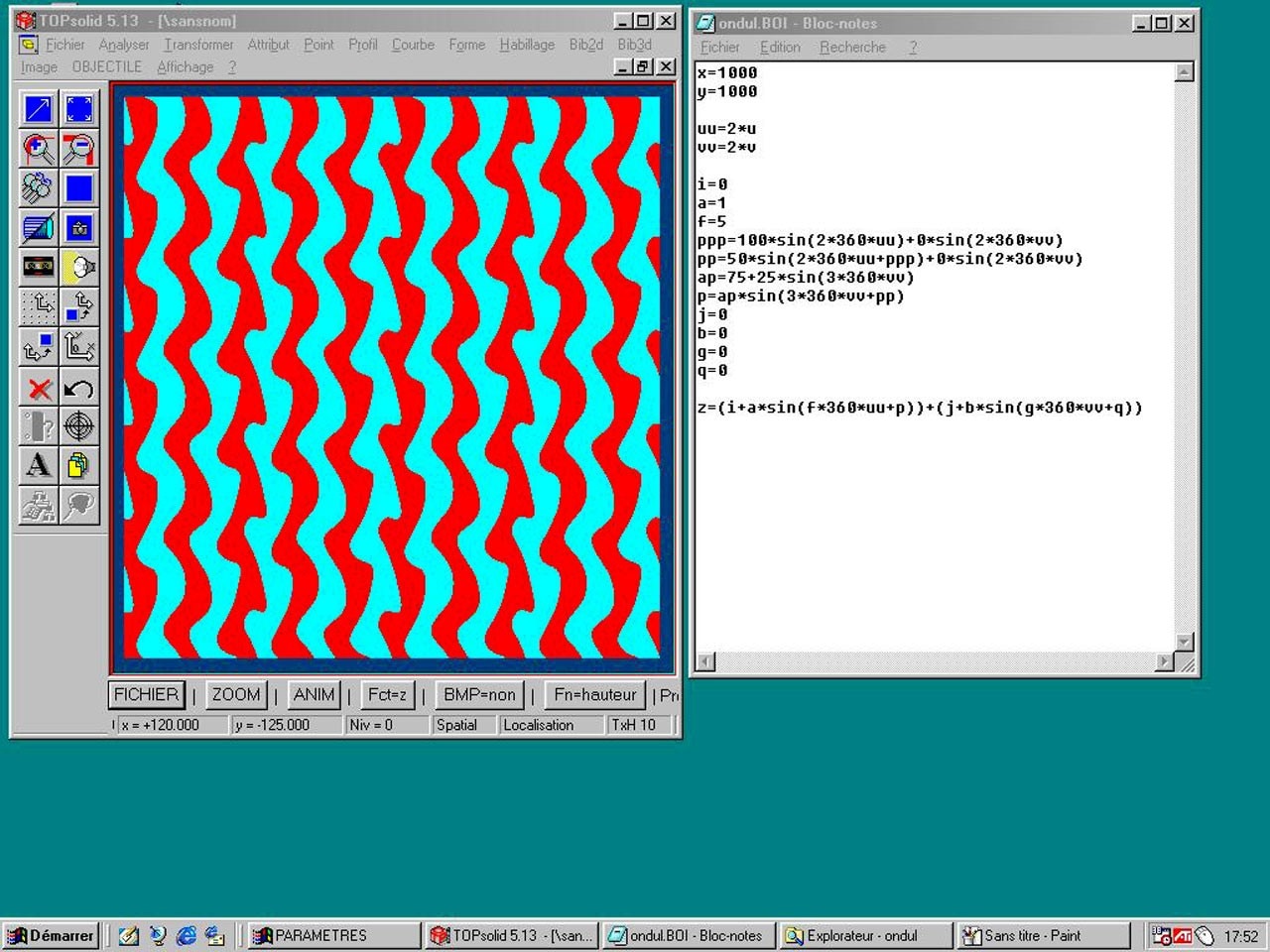
Karl Chu’s “Catastrophe Machine” (1997–1998) and “X Phylum” (1994–1998) tackle the crossover between digital modeling and drafting. “X Phylum” used the most powerful digital technology then available for the geometric visualization of mathematical principles. The “Catastrophe Machine” is a drafting machine that exhibits the variation and unpredictability of stochastic mathematics and catastrophe theory. The machines no longer exist, but a new one was designed by Chu in 2014 and constructed for the exhibition.
“Panneaux Objectile” (1995–2013) designed by Objectile SARL (Bernard Cache, Patrick Beaucé) was the first project to establish a connection between digital design software and CNC (Computer Numerical Control) machine production.
“HypoSurface” (1997 – present) designed by dECOi Architects (Mark Goulthorpe), presents a wall with a “skin” divided up into pixel-like metallic facets manipulated by a network of pistons to create images, texts, and patterns in dynamic relief. The first working prototype was exhibited at the 7th Venice Architecture Biennale in 2000.
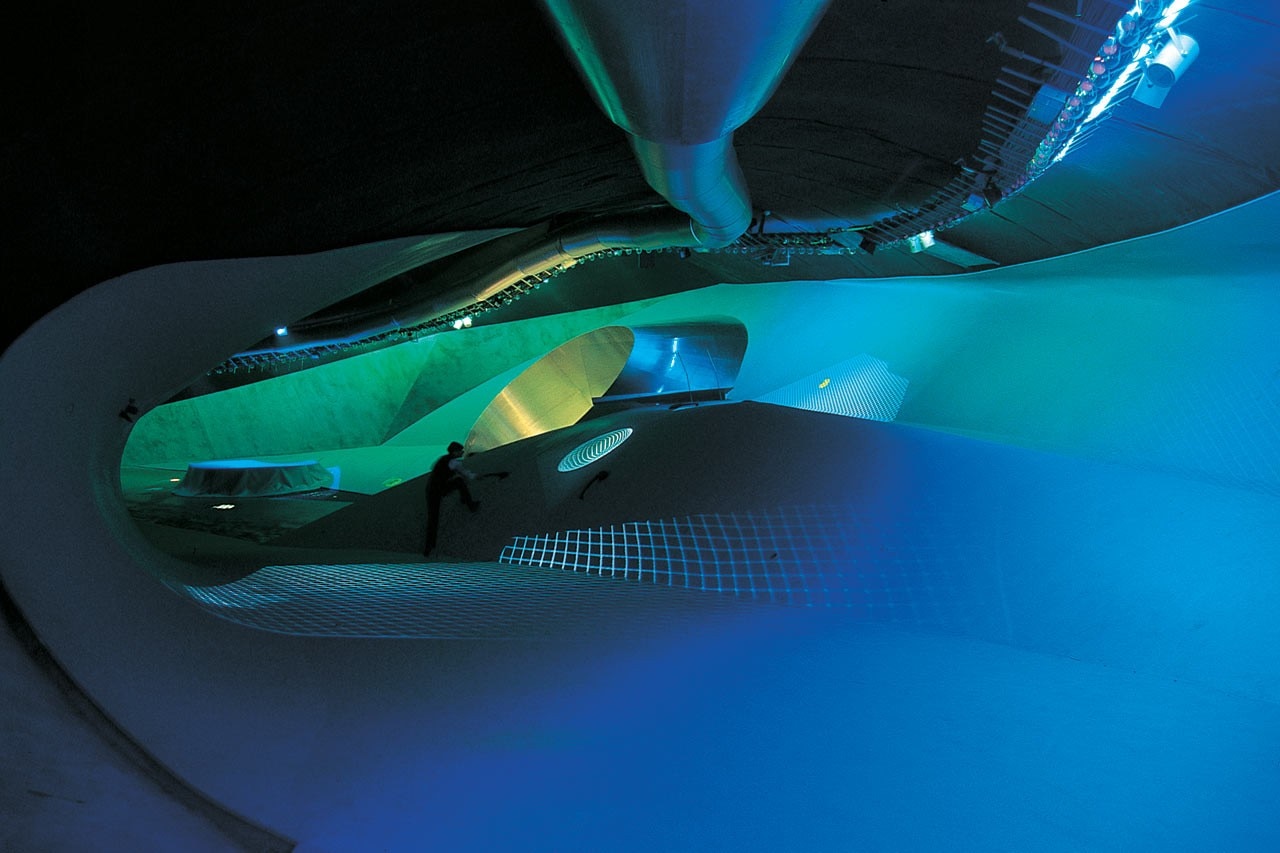
The final project included in the show is “NSA Muscle” (2003–2004) by ONL [Oosterhuis_Lénárd], which was built for the “Architectures Non Standard” exhibition at the Centre Georges Pompidou (2003–2004) as a pneumatic paradigm for a malleable, dynamic, deforming room. ONL programmed the Muscle to have a will of its own in order to stimulate an interactive feedback loop between a human and the architectural machine.
“Media and Machines” follows the first “Archaeology of the Digital” exhibition presented in 2013, featuring the work of Frank Gehry, Peter Eisenman, Shoei Yoh, and Chuck Hoberman. A third exhibition in the series is being planned for next year. The ultimate goal of the project is to assemble, investigate, and archive 25 seminal projects that engaged architectural design with digital technology and that will enter the CCA’s permanent collection.
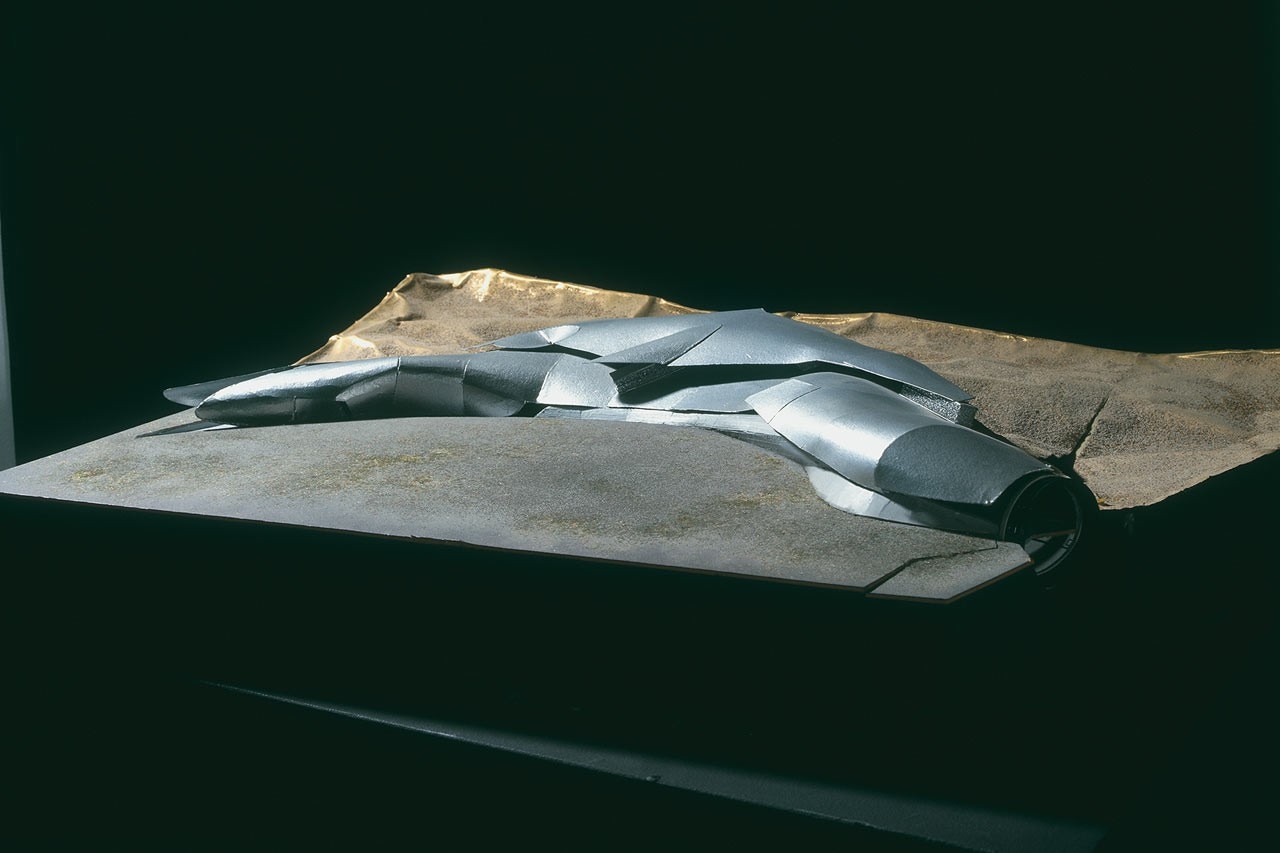
until May 1, 2015
Archaeology of the Digital
Media and Machines
organized by the Canadian Centre for Architecture in Montreal (CCA)
YSoA’s gallery
180 York Street, New Haven, Connecticut
with the support of: Ministère de la Culture et des Communications du Québec, Canada Council for the Arts, Conseil des arts de Montréal and Graham Foundation for Advanced Studies in the Fine Arts
with the contribution of: Elise Jaffe + Jeffrey Brown
graphic design: Jonathan Hares

Wood: a key resource for south tyrol
In this northern Italian region, wood is a vital resource that brings together tradition, the economy and environmental protection. The short and sustainable supply chain is worth €1.3 billion and involves thousands of local companies.


